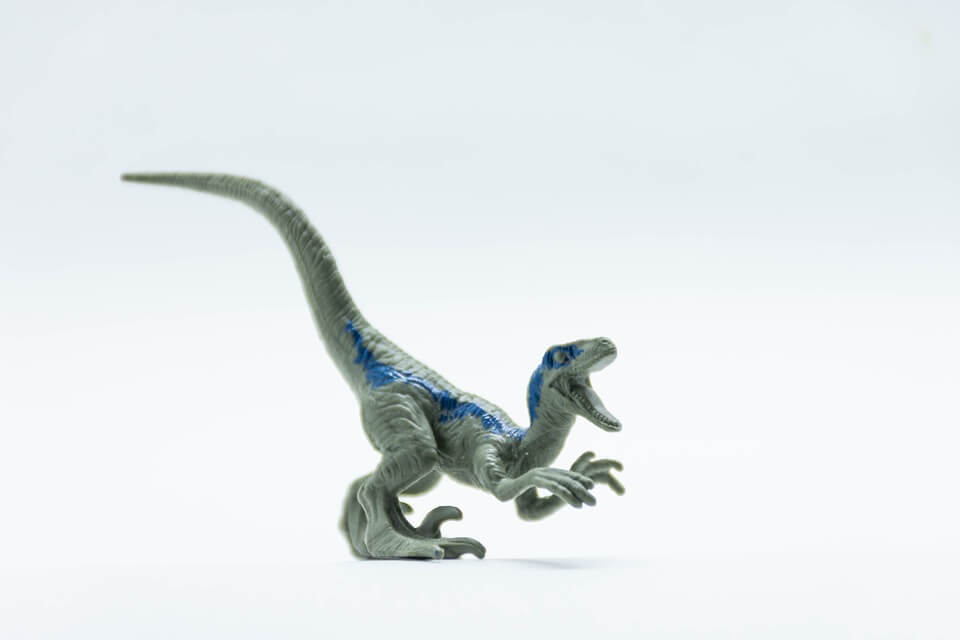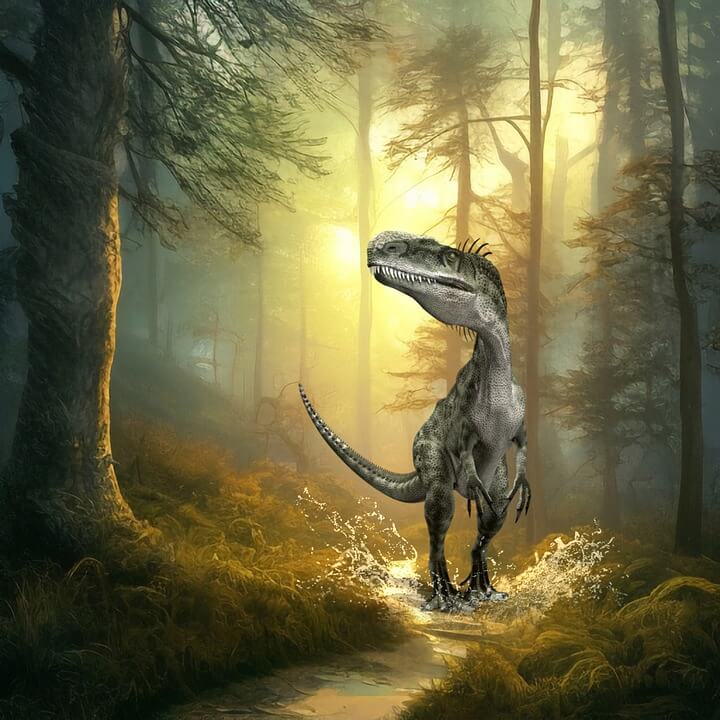Get ready to go back in time and celebrate National Velociraptor Awareness Day with our fun ideas and interesting facts about these ancient predators. Learn about their behavior, intelligence, and habitat, and discover why we love and celebrate these prehistoric creatures.
National Velociraptor Awareness Day is a humorous holiday that is celebrated on April 18th every year. It was created as a satirical response to the portrayal of velociraptors in the media as being vicious and bloodthirsty creatures. The holiday aims to raise awareness about the importance of understanding and appreciating these fascinating prehistoric creatures. While velociraptors are extinct and have been so for millions of years, National Velociraptor Awareness Day serves as an opportunity to educate people about the significance of paleontology and the importance of protecting and preserving the natural world.
History of National Velociraptor Awareness Day
National Velociraptor Awareness Day was created by the youth advocacy group, Velocephaptors, in 2009. The group was formed by two college students, Chris Creighton and Brian Switek, who wanted to promote a more accurate and positive view of velociraptors, which had been misrepresented in popular media.
The idea for National Velociraptor Awareness Day originated when Creighton and Switek were discussing the portrayal of velociraptors in the popular movie, Jurassic Park. They felt that the film’s depiction of velociraptors as bloodthirsty and monstrous creatures was inaccurate and did not reflect the scientific understanding of the species.

Source : Pixabay.com
To raise awareness about the true nature of velociraptors, Creighton and Switek decided to create a holiday dedicated to educating people about the creatures. They chose April 18th as the date for the holiday because it was the anniversary of the publication of the seminal paper on velociraptors, which helped to establish the scientific understanding of the species.
Since its inception, National Velociraptor Awareness Day has grown in popularity and has been celebrated by museums, zoos, and educational institutions around the world. While it is primarily a humorous holiday, it has also helped to raise awareness about the importance of understanding and appreciating prehistoric creatures and the natural world.
Velociraptor Timeline
Here is a timeline of key events related to Velociraptor:
- 75-71 million years ago: Velociraptor first appears in the fossil record during the Late Cretaceous period.
- 1924: The first Velociraptor specimen is discovered by the American Museum of Natural History expedition to Mongolia led by Roy Chapman Andrews.
- 1969: The Velociraptor genus is formally named and described by paleontologist John Ostrom.
- 1990: The publication of Michael Crichton’s novel “Jurassic Park” popularizes the image of Velociraptor as a deadly, intelligent predator.
- 1993: The film adaptation of “Jurassic Park” features Velociraptor as one of the main antagonists and introduces the idea that the dinosaur was featherless.
- 2007: The discovery of a Velociraptor fossil with preserved feathers in China provides evidence that the dinosaur was, in fact, feathered.
- 2009: National Velociraptor Awareness Day is established to promote a more accurate and positive understanding of the species.
- 2015: The discovery of a Velociraptor fossil with preserved tail feathers in Siberia provides further evidence of the dinosaur’s feathered appearance.
Today, Velociraptor remains an important subject of study for paleontologists, providing insight into the evolution and behavior of one of the most iconic and fascinating dinosaur species.

Source : Pixabay.com
Are velociraptors dangerous?
Velociraptors were certainly dangerous predators, but they are no longer a threat to humans, as they have been extinct for millions of years. The idea of Velociraptors as deadly and bloodthirsty creatures comes largely from their portrayal in popular media, such as the movie “Jurassic Park,” which depicts them as highly intelligent and vicious hunters.
In reality, the behavior and appearance of Velociraptors are still the subject of scientific research and debate. They were likely carnivorous predators and may have hunted in packs, but it is unclear how intelligent or social they were, and whether they had feathers or not.
It is important to remember that the study of Velociraptors and other extinct animals is primarily focused on understanding their past, and not on assessing any potential danger to humans in the present day.
Are velociraptors smart?
There is evidence to suggest that Velociraptors were relatively intelligent dinosaurs. Paleontologists have found that they had relatively large brains compared to their body size, which suggests they may have had a higher level of cognitive ability than some other dinosaur species.
Additionally, studies of Velociraptor fossils have revealed evidence of complex social behavior, such as evidence of pack hunting and cooperative parenting. These behaviors are often associated with animals that have a higher level of intelligence and social awareness.
However, it is important to note that the exact level of intelligence of Velociraptors is still a subject of scientific debate and further research is needed to fully understand their cognitive abilities. It is also important to remember that their behavior and appearance have been largely interpreted from fossils, and we can never know for sure exactly how they behaved or how intelligent they were.
What are the two types of velociraptors?
There is only one recognized species of Velociraptor, which is Velociraptor mongoliensis. However, there were other related species of dromaeosaurids, the family of dinosaurs to which Velociraptor belongs, that lived during the same time period and had similar anatomical features. These include Deinonychus and Utahraptor, which are often compared to Velociraptor in popular media.
Deinonychus, which lived in North America about 115-108 million years ago, was larger than Velociraptor and had similar anatomical features, such as a sickle-shaped claw on its foot. Utahraptor, which lived in North America about 125 million years ago, was even larger than Deinonychus, with a length of up to 23 feet (7 meters).
While Velociraptor is the most well-known and iconic species of dromaeosaurid, it is important to note that there were other similar species that lived during the same time period and had similar features.

Source : Pixabay.com
National Velociraptor Awareness Day Activities
National Velociraptor Awareness Day is a lighthearted holiday that is meant to be enjoyed and celebrated in fun and creative ways. Here are some ideas for activities you can do to celebrate the day:
- Visit a museum or zoo that has a dinosaur exhibit. Many museums and zoos have interactive exhibits that allow visitors to learn more about dinosaurs, including Velociraptor.
- Host a Velociraptor-themed movie marathon. This could include classic dinosaur movies like “Jurassic Park,” as well as other films and documentaries about dinosaurs and prehistoric life.
- Hold a Velociraptor trivia contest. Test your knowledge of Velociraptor facts and trivia with friends and family, or host a larger event with prizes for the winners.
- Have a Velociraptor-themed party or potluck. Encourage guests to bring dinosaur-themed snacks and decorations, and have games and activities that revolve around the theme.
- Create Velociraptor-themed art or crafts. Draw, paint, or sculpt your own Velociraptor creations, or make dinosaur-themed crafts like paper mache fossils or dinosaur hats.
Remember, the goal of National Velociraptor Awareness Day is to have fun while promoting a more accurate and positive understanding of Velociraptors and other prehistoric creatures. Get creative and have a great time celebrating!
Interesting Fun Facts About Velociraptor
Here are some interesting fun facts about Velociraptor:
- Velociraptor was a small dinosaur, only about 6 feet (2 meters) long and weighing around 50 pounds (23 kilograms).
- Velociraptor’s distinctive sickle-shaped claw on its foot was used for hunting and likely could have inflicted serious damage to its prey.
- Recent research suggests that Velociraptor may have had feathers, which is a trait shared by many other dinosaur species.
- Paleontologists believe that Velociraptor hunted in packs, which would have made them even more effective predators.
- Velociraptor’s brain was relatively large compared to its body size, which suggests that it may have had a higher level of intelligence than some other dinosaur species.
- Velociraptor lived during the Late Cretaceous period, around 75-71 million years ago, in what is now Mongolia.
- Velociraptor was first discovered in 1923 by a team of American and Mongolian scientists.
- The discovery of Velociraptor was initially overshadowed by the discovery of a larger dinosaur species, Protoceratops, which was found alongside it.
- The name “Velociraptor” means “swift thief” in Latin.
- Despite its depiction in popular media, Velociraptor was likely covered in feathers, which would have given it a much different appearance than the scaly reptiles we often imagine.
Why We Love and Celebrate National Velociraptor Awareness Day
National Velociraptor Awareness Day is a fun and lighthearted holiday that has gained popularity in recent years. There are a few reasons why people love and celebrate this day:
- Nostalgia: Many people grew up watching movies and reading books about dinosaurs, including Velociraptors. Celebrating National Velociraptor Awareness Day can be a fun way to reconnect with childhood memories and nostalgia.
- Fascination with prehistoric life: Dinosaurs and other prehistoric creatures have long fascinated people, and Velociraptors are among the most popular and well-known species. Celebrating National Velociraptor Awareness Day is a way to indulge in this fascination and learn more about these ancient creatures.
- Appreciation for science and discovery: Paleontology, the study of prehistoric life, is an important field of science that has contributed to our understanding of the history of the Earth and the diversity of life that has existed over time. Celebrating National Velociraptor Awareness Day can be a way to appreciate the work of scientists and researchers who study dinosaurs and other ancient species.
Sense of humor: National Velociraptor Awareness Day is a playful and humorous holiday that doesn’t take itself too seriously. Celebrating this day can be a fun way to inject some levity and humor into our lives.